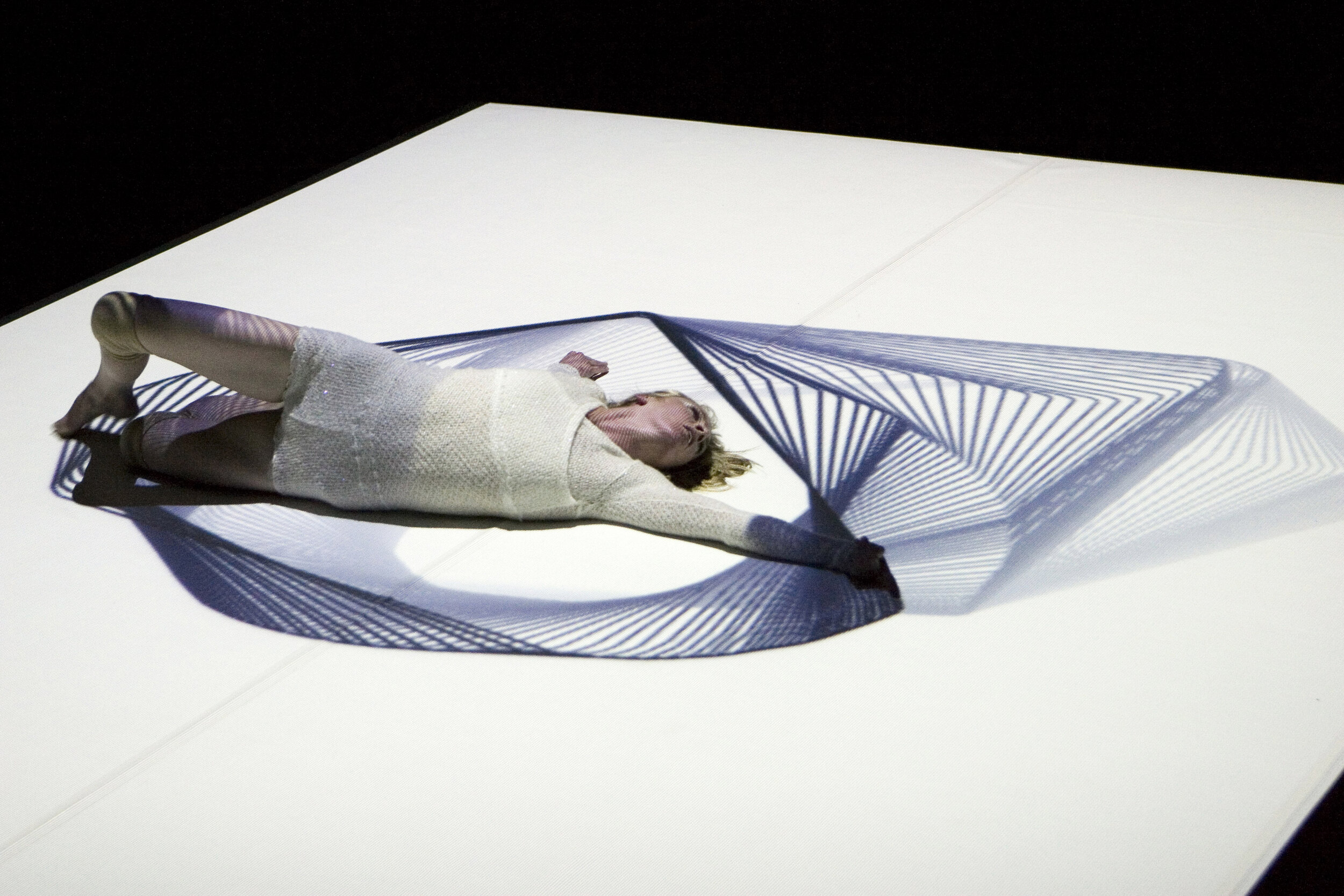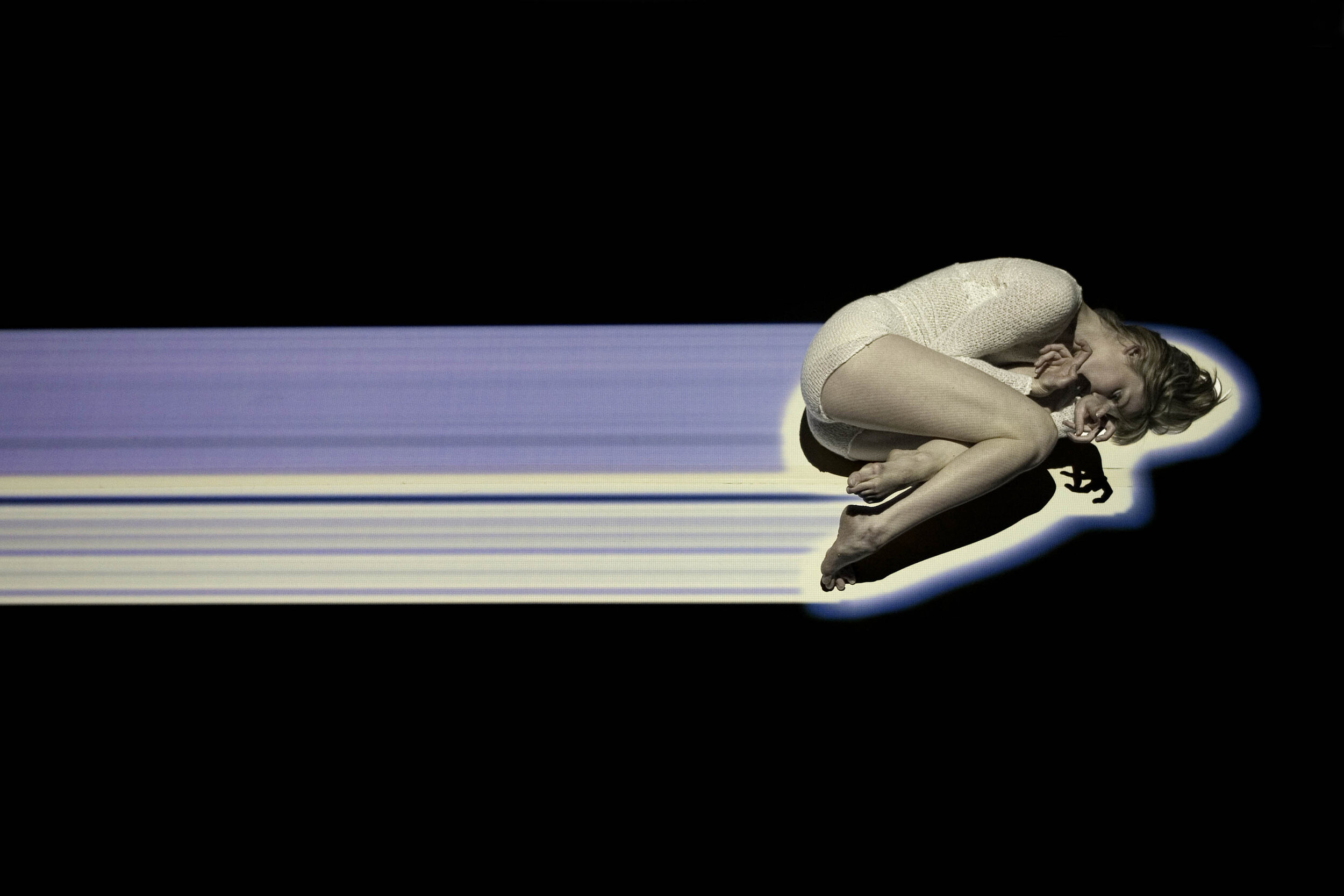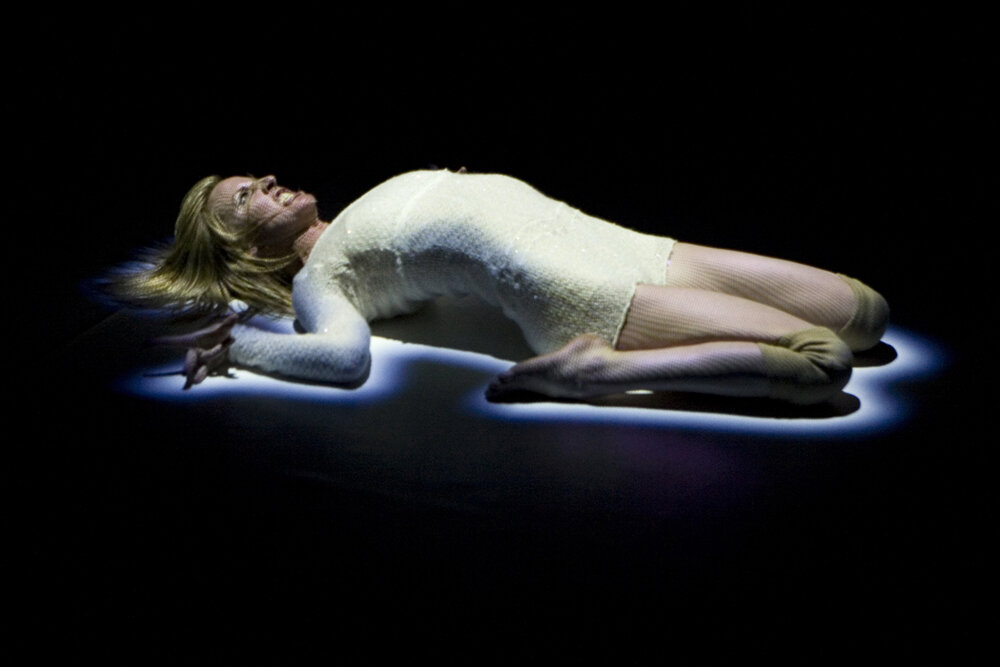Glow 2006
Glow was an illuminating choreographic essay by Artistic Director Gideon Obarzanek and interactive software creator Frieder Weiss. Beneath the glow of a sophisticated video tracking system, a lone organic being mutated in and out of human form into unfamiliar, sensual and grotesque creature states.Utilising the latest in interactive video technologies, a digital landscape was generated in real time in response to the dancer’s movement. The body’s gestures were extended by and in turn manipulated the video world that surrounded it, ensuring no two performances were exactly the same.
In Glow, light and moving graphics were not pre-rendered video playback but rather images constantly generated by various algorithms responding to movement. In most conventional works employing projection lighting, the dancer’s position and timing have to be completely fixed to the space and timeline of the video playback. Their role is reduced to the difficult chore of making every performance an exact facsimile of the original. In Glow, however, the machine saw the performer and responded to their actions, unlocking them from a relationship of restriction and tedium.
Creative Team
Concept & Choreography Gideon Obarzanek
Concept & Interactive System Design Frieder Weiss
Music & Sound Design Luke Smiles/Motion Laboratories
Additional Music Ben Frost
Costume Design Paula Levis
Original Performers Kristy Ayre, Sara Black, Lina Limosani (Understudy)
Additional Touring Performers Bonnie Paskas, Amber Haines, Kristina Chan, Harriet Ritchie
Artistic Director Gideon Obarzanek
Executive Producer Vivia Hickman
Production & Operations Manager Donna Aston
Costume Supervisor Natalie Boyle
Multimedia Operation Byron Scullin
Multimedia Operation (Touring) Nick Roux
Premiere Date
31 August 2006 Melbourne
Touring Seasons
2006 Lublin
2007 Melbourne, Sydney, Perth, Darwin, Shanghai, Beijing, Dresden, Groningen, Pittsburg
2008 Adelaide, Geelong, Calgary, Vancouver, Zagreb, The Hauge, Wellington, Lisbon, Brighton, Bristol, Manchester, Connecticut, Denver, New York
2009 Prague, Berlin, Amsterdam, Norwich, Troy
2010 Canberra, Sydney, Jakarta, Venice
2011 Amman, Beirut, Ramallah, Barcelona
2012 Sao Paulo, Budapest
2013 Mumbai, Bangalore
Awards
2007 Green Room Award for Design in Dance (Frieder Weiss)
2008 Helpmann Award for Best Female Dancer in a Ballet or Dance Work (Sara Black)
2008 Helpmann Award for Best Ballet or Dance Work
A note from Gideon Obarzanek
Frieder and I first met at the Monaco Dance Forum at the end of 2004 and discussed the use of a data projector for lighting a moving body. In late 2005 in Australia we tested various relationships between a moving body and motion graphics using an infrared camera tracking system.
With a better understanding of the system’s capabilities, its possible applications and further potential, the dancers and I have attempted in the movement to create a type of “biotech fiction”, shifting the body into other imaginary sensual and grotesque creature states. The relationship of the digital pixel environment to the performer varies from being an illustrative extended motion of their movement, a visual expression of internal states, and also a self-contained animated habitat.
The relationship between the dancer and the graphics describe two entities that are in phase and at one with each other. Initially, only momentary fractures undermine this alliance, however as the work develops so does the unravelling and ultimate rupturing of these two elements.
In the opening scenes, Glow’s high commitment to its aesthetics makes it visually very impressive. What may be more interesting however is the hint of a creature/person beginning to reveal itself from within this kaleidoscope system. The voice in the opening or the subtle shuddering of the body later on alludes to the possibility of something else beyond the clearly defined work of beautiful shapes and virtuosic execution.
As the work develops so does the initial responsive relationship of light and graphics to the moving body. At one point the dancer’s effect on a graphic pattern gives us the impression that all particles are related and that the body has merged into a single entity with the system. Later, projected shadow figures expelled by the performer take on a dramatic form of their own and influence the behaviour response of the dancer. Approaching a climactic end, there is an intense physical process that ultimately leads to the separation between the body of the performer and its projected image.
The seamless joint venture forged in Glow between a moving body and tracking light and images ultimately reveals itself as flawed and in the end irreconcilable. The work expresses a desire to discard or escape elements from within ourselves and this can be seen as a visual metaphor for our own constant struggle with our primitive state of duality.
“…an astonishing performance, tackling Obarzanek's thrashing, flailing, joint-crunching action like a high-velocity missile, with only occasional respite.” The Age.





